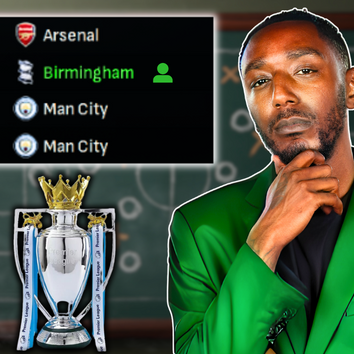
RDF tactics
Nov 27, 20241 min read

RDF tactics
Sep 1, 20236 min read

RDF tactics
Aug 30, 20235 min read

RDF tactics
Jan 18, 20238 min read

RDF tactics
Jul 13, 20218 min read
Rangnick's formation preference is a 4-4-2 which transforms into more of a 4-2-2-2 with the two wingers coming inside. He has also used a 4-3-3 (at Hoffenheim) and a 3-5-2 (at RB Leipzig) demonstrating his tactical flexibility and it is, of course, yet to be known which formation he'll go with at Manchester United. With their current crop of players, the 4-4-2 and/or the 4-3-3 looks most likely.
How United COULD line-up

Rangnick believes there are 5 different situations that decides a football game.
1) What happens when you are in possession?
2) How to set up when the other team has the ball
3) Transition - When the ball has been won
4) Transition - When the ball has been lost
5) Set-pieces
When out of possession, Rangnick’s teams look to press the opposition early to try and win the ball back to go on the attack. Where Rangnick's team win the ball back isn't most important, as it's expected to press intensely and aggressively whenever the opposition has the ball. This allows them to quickly transition into the attack and exploit the opposition to get a shot off within seconds. The closer to the opponent's goal the better when winning the ball back, as this means there's less distance between the ball and the opponent's goal but the defending team also will have fewer players behind the ball to stop the counter-attack.
Rangnick himself said that he believes the intensity in which you win the ball, will influence how intense and aggressive you will counter-attack. "The more intense we win the ball, the bigger the chance we create".
Rangnick will also use certain pressing traps where they lure the opposition into. In the 4-4-2, a pass to the full-back will activate the press and the team will collectively shift towards the ball side. They will press the ball carrier intensely and close off all the passing options. In the 4-3-3 system, at Hoffenheim, they set up in more of a mid-block and plenty of bodies to press in the centre of the pitch, while the wide positioning of the wingers forced the opposition to play into their trap, inside the middle.
Rangnick also wants his sides to create defensive triangles when pressing.
Rangnick’s tactics going forward is all about quick vertical passes. Getting the ball from back to front quickly was also helped by the use of counter-attacking after his side have just won the ball. Ralf Rangnick has spoke on his dislike of having possession for possession sake. Rangnick aims to create overloads in very dangerous attacking areas, especially in the half-spaces. This helps with ball progression and disorganising defences but also aids in their quick passing combinations to create chances. In the 4-4-2, the wing-back, ball-near CM, winger and/or striker are the players regularly forming triangles or diamonds when overloading an area of the pitch. Overloading in front of defences also allows for counter-movements. Simply put, when one player drops that opens space for another to move into. This is helped by Rangnicks narrow attacking shape, especially in the 4-4-2 as the two wingers invert. But this narrow shape in attack also forces opponents to defend narrow and that leaves space for the wing-back to advance and operate. The wing-backs will be then used to play the ball back inside, preferably the half-space or put in a driven cross where Rangnick side will have plenty of bodies inside.
https://totalfootballanalysis.com/analysis/ralf-rangnick-tactical-analysis-tactics
Bear in mind these player roles are also designed around the Manchester United squad and unlikely to suit every team as a plug n play. The Mezzala could be changed to a different role, perhaps Carrilero to cover the attacking wide players. The Wide Playmaker could also be changed to another Inverted Winger and Poacher to Advanced Forward.
Comments